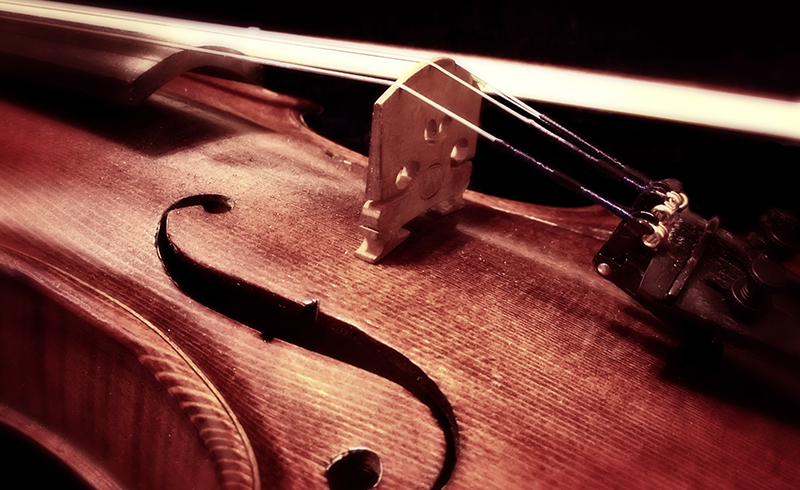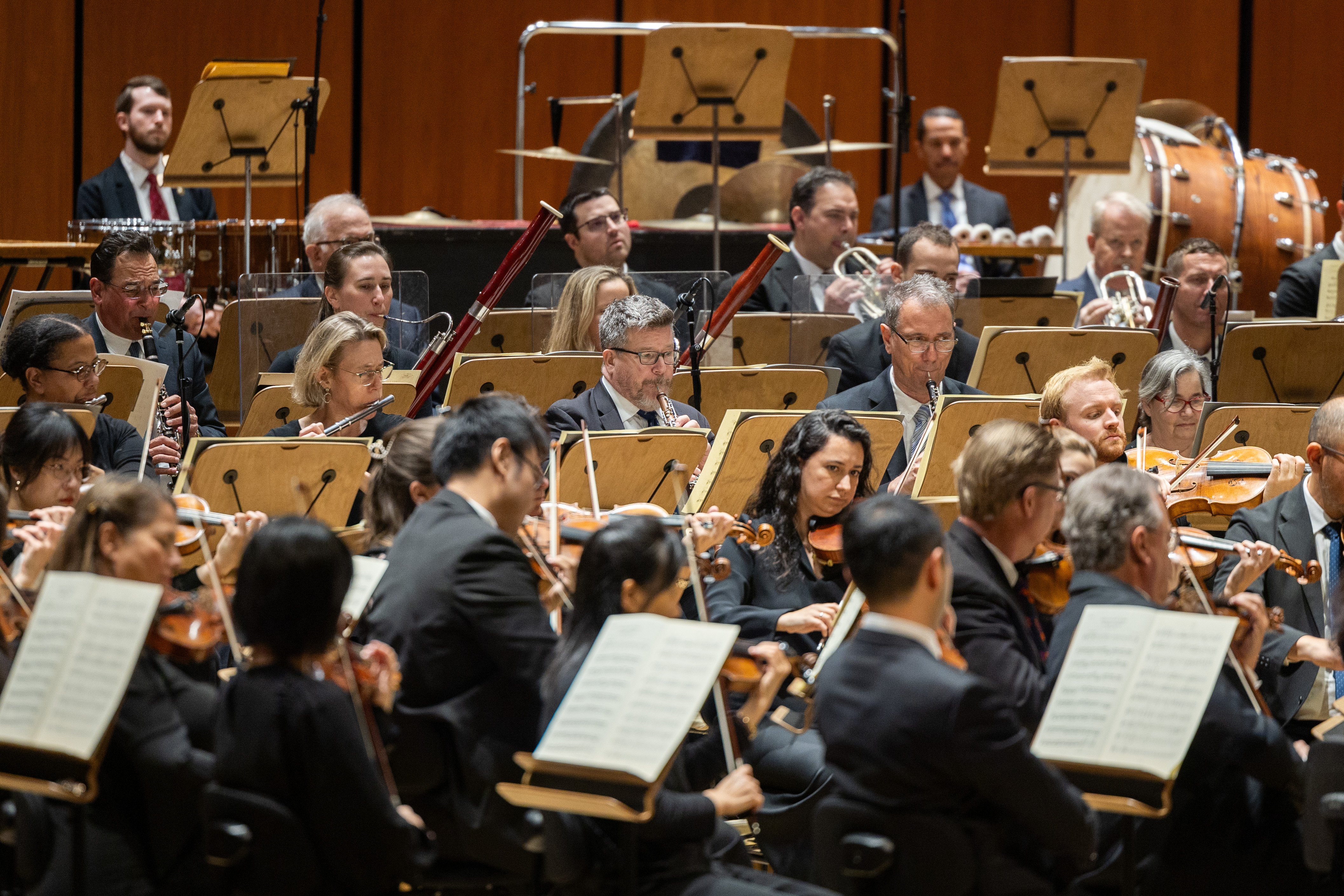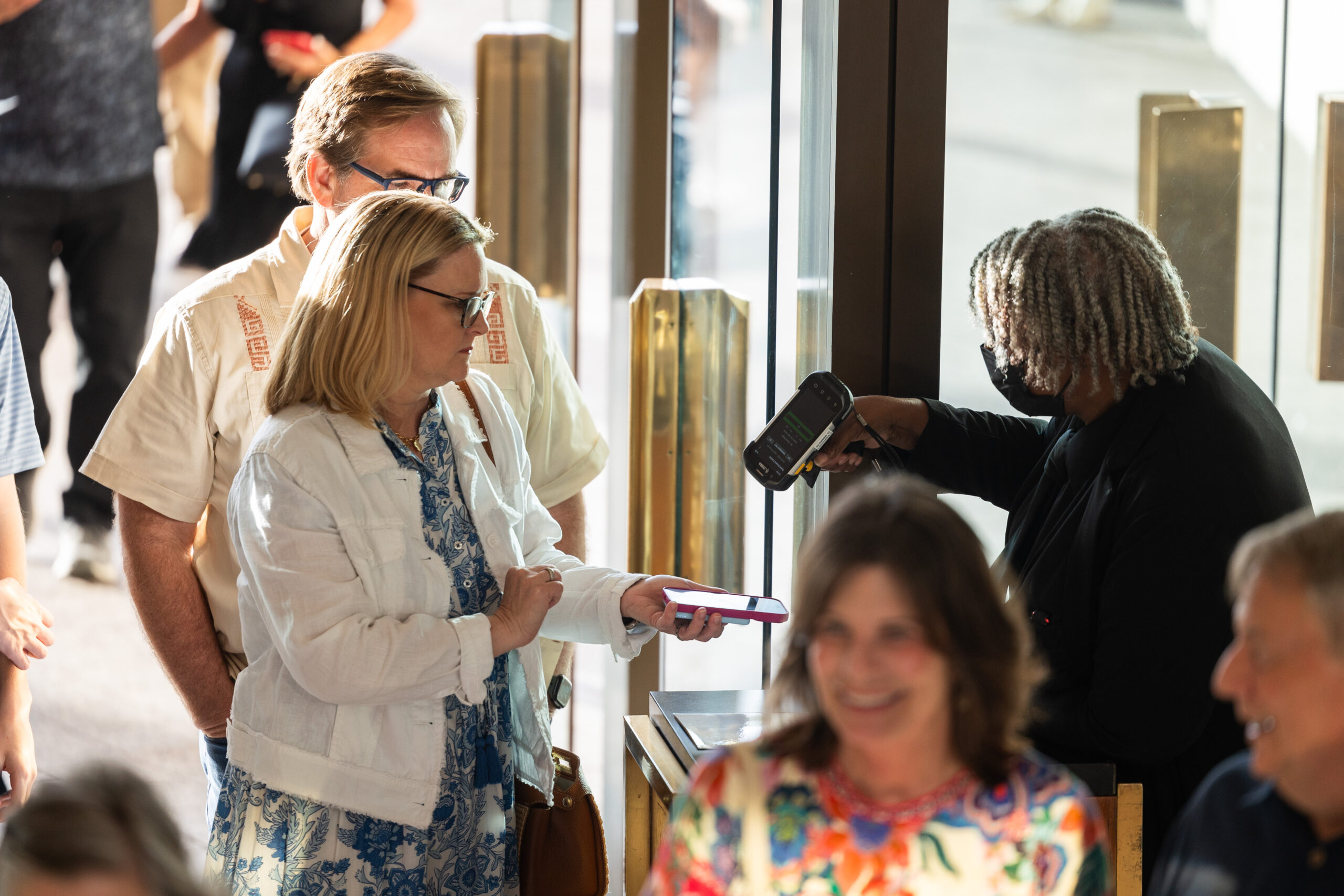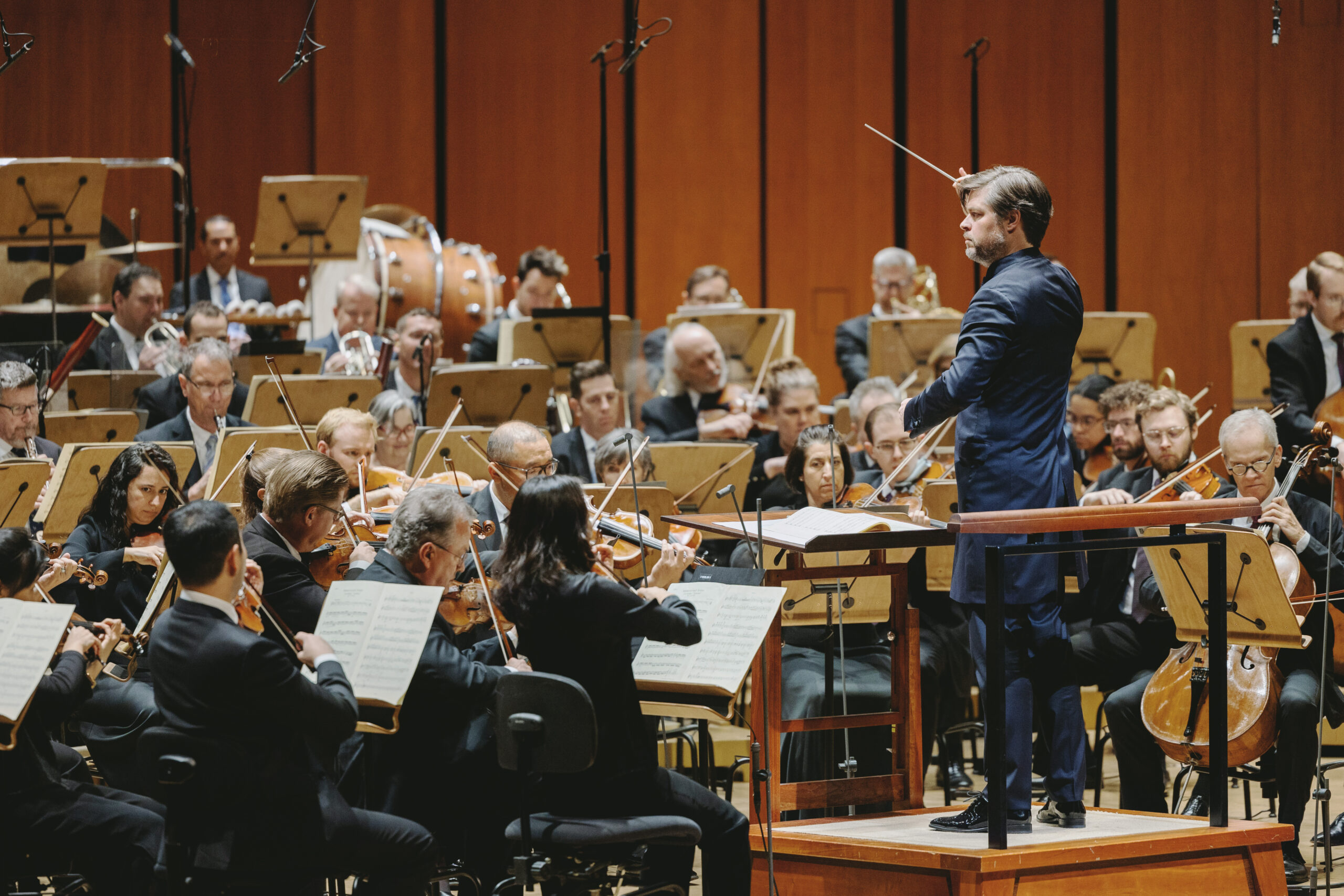
April 27, 2018
From Finland with Love: The Sibelius Violin Concerto

Jean Sibelius’ first musical instruction came in the form of piano lessons from his aunt Julia. Sibelius was a troublesome student, however; his habit of improvising instead of practicing his etudes would often earn him “raps across the knuckles.” He never really took to the piano.
It was only as a teenager that he discovered the violin, writing “When I play, I am filled with a strange feeling; it is as though the insides of the music opened up to me.” He dreamed of becoming a virtuoso violinist and seriously pursued a performing career through his early twenties. Unfortunately, his late start combined with stage fright to prevent his dream from coming true. Many years later, however, his love of the instrument would find an outlet in one of his greatest masterpieces: the Violin Concerto in D minor.
By the time Sibelius began work on the concerto in 1902, he was in his late thirties, and with two symphonies, Finlandia and numerous other works, he had established himself as the leading composer of the emerging Finnish nation (politically, Finland was still part of the Russian empire at this time). Despite his professional success, Sibelius’ personal life was often in turmoil during this period. Possessed of a dreamy, melancholy disposition, Sibelius had developed a troubling alcohol dependency during his student years. Combined with the way money seemed to slip through his fingers, his addiction put enormous strain on his family life; sometimes he would disappear for days at a time.

With three young children to look after, this was particularly hard on his wife Aino, a daughter of Finnish high society who had fallen in love with the handsome composer and his music as a young woman. With the help of friends, she convinced Sibelius to relocate the family to an artists’ colony away from Helsinki and its temptations. A renowned architect donated the plans for the new house, and a well-to-do uncle passed away leaving Sibelius a grimly convenient inheritance that helped finance construction. Ainola, as Sibelius would call it, would remain their home for the rest of their lives. Ainola’s tranquility and proximity to nature would have a profound influence on his music.
Genesis
During his good days, Sibelius managed to complete the concerto. In a letter to Sibelius’ friend Axel Carpelan (who first suggested the idea of a violin concerto years before), Aino provided a glimpse into its genesis:

“The first performance of the concerto is now definitely decided for 8 February but that however is uncomfortably soon. Janne [all of Sibelius’ friends and family called him Janne] has been in the throes of it all the time (and so have I). Again it has been an embarrass de richesse. He has so many ideas forcing their way into his mind that he becomes quite literally dizzy. He’s awake night after night, plays wonderful things, and can’t tear himself away from the marvelous music he plays—there are so many ideas that one can’t believe it is true, all of them so rich in possibilities for development, so full of life. But if I have been excited by all of this, I have also suffered too. […] Of course I am happy to have been able to be so near Janne all this time—whether my presence is any help to him in his darker moments I cannot say—but it has been a rewarding and satisfying experience for me. […] Keep well. Janne sends you his warmest regards. I am sitting at his writing desk—he is at the piano—there’s a nice fire. It is night.”
Indeed, the premiere was uncomfortably soon. Though the concerto was written for the renowned German violin virtuoso Willy Burmester, financial pressures compelled Sibelius to move up the date of the premiere. The concerto was thus first performed in Helsinki by a much less well-known local violinist, who likely had inadequate time to learn one of the most difficult violin concertos ever written, whatever his abilities. In addition to pecuniary considerations, it could be possible that Sibelius himself had doubts about his new work and wanted to hear it performed for a forgiving home crowd before sending it off to be performed in Europe’s musical capitals. Though the audience responded warmly at the premiere, Helsinki’s leading music critic condemned the piece, and audiences dwindled at subsequent performances.

Sibelius was disappointed, writing “I will withdraw my concerto […] This is my hidden sorrow at present.” As Aino herself noted, the original version of the concerto was an embarrassment of riches, with too many competing ideas. He set the work aside and revised it in the summer of 1905, making cuts as well as changes in harmony and orchestration that gave the work greater focus, making it the masterpiece we know today. Impatient to unveil the new version, Sibelius gave its premiere to conductor Richard Strauss and the concertmaster of the Berlin Philharmonic. Incensed at being passed over twice, Burmester would never perform it.
Despite a successful Berlin Philharmonic premiere, the concerto was slow to enter the repertoire, and it was only after the great Jascha Heifetz made the first recording of it in 1935 that it attained the place it has in concert halls today.
The Music
The concerto begins with one of the most captivating openings in the repertoire: above muted, divisi strings, the soloist spins a haunting melody echoed by a lone clarinet:
https://www.youtube.com/watch?v=NgJ58xBBx40
Though this theme may conjure images of snowy Finnish landscapes for many, the sketches for it in fact trace back to Sibelius’ stay in Italy during the spring of 1901. The earliest version of the melody is accompanied by the note “bells in Rapallo.”
This is not, of course, the version that ended up in the concerto. Like Beethoven, Sibelius was a composer who had to tirelessly work, rework and refine his ideas, which often changed significantly from the initial sketches to the finished piece. Perhaps during its evolution, some of the Finnish snow crept in. Though the opening may sound like a spontaneous outpouring of melody, it is in fact a carefully crafted theme that will be developed throughout the movement.

The theme gives way to virtuoso passages for the violinist above an increasingly stormy orchestral accompaniment, until the meter suddenly changes from 4/4 (1-2-3-4) to 6/4 (1-2-3-4-5-6) as the orchestra transforms a fragment of the opening melody into what will become the second theme of the movement.
The clarinets give a brief hint of this new theme before the soloist plays a warm, passionate version of it marked espressivo and affettuoso (expressive and loving). It is easy to imagine Sibelius composing this during a scene similar to the one described at the end of Aino’s letter quoted above: “I am sitting at his writing desk—he is at the piano—there’s a nice fire. It is night.” Indeed, a viola soon echoes the soloist—perhaps evoking a duet between a soprano and tenor.
This intimate passage ends as the soloist soars up to a high note, only to fall back to earth as the music darkens, turning to a minor key. A series of tense trills leads to a powerful new theme for orchestra.

This theme dies away, leading to a cadenza, an extended passage for the soloist alone (there is one short interjection from the orchestra at the beginning of Sibelius’ cadenza, but the rest of it is completely unaccompanied). Traditionally, cadenzas came at the end of a movement, as a sort of grand finale for the soloist’s virtuoso display. In his Violin Concerto, however, Mendelssohn moved the cadenza from the end of the movement to just after the middle, making it structurally the climax of the work. Interestingly, Mendelssohn’s Violin Concerto was one of the few big concertos that Sibelius actually learned while he was still studying the violin. In his own concerto, he takes Mendelssohn’s innovation a step further. Here, the cadenza assumes grand proportions, taking up the bulk of the middle of the movement, which is normally reserved for the development of the themes that have already been presented.
This is indeed what the soloist does, focusing on the beginning of the opening melody and embellishing it with expressive and incredibly demanding figuration, until a bassoon reenters unobtrusively with the opening melody. The soloist interrupts and now plays the melody on its lowest string over a dark, rustling orchestral accompaniment. An extended, developmental orchestral passage leads back to the espressivo second theme, but this time the soloist joins the orchestral theme that follows. The violin’s intense cascade of octaves leads to a dramatic conclusion for the first movement.
After a brief introduction from the woodwinds, the soloist begins the slow second movement with a long melody whose character has been compared to that of many of Sibelius’ songs for voice and piano. Sibelius biographer Erik Tawaststjerna has compared it specifically to Sibelius’ song Demanten på marssnön (The diamond on the March snow), which begins with a similar melodic profile. (You can find a translation of the song—which is in Swedish—here. Interestingly, though Sibelius became a national symbol of Finland, he actually came from Finland’s Swedish speaking minority, although he spoke both languages. While his public works for chorus are generally in Finnish, his more private songs for voice and piano typically set verses by Swedish poets.)

This melody gives way to a brooding central section, which builds to the return of the main theme in the orchestra as the soloist overlays it with virtuoso ornamentation. The movement fades away as the soloist climbs to a serene high note.
Of the last movement, Sibelius remarked, “It must be played with absolute mastery. Fast, of course, but no faster than it can be played perfectly von oben [from beginning to end].” Those seeking a thrilling finale full of violin pyrotechnics will not be disappointed; the movement ranks among the most challenging and exciting written for the violin. It begins with an energetic theme in the style of a polonaise (a dance with a moderate 1-2-3, 1-2-3 beat pattern). Unlike Tchaikovsky’s polonaises, which evoke the grand ballrooms of Imperial Russia, this dance has a fresh, rustic character full of élan vital. High-flying runs for the soloist lead to a new theme in the orchestra. This heavy, foot-stomping melody likely prompted the popular British music writer Donald Tovey to call the movement a “polonaise for polar bears.”
The soloist’s rhythmic, syncopated response, however, is downright sexy. It leads to a version of the theme for the violin featuring brilliant double and triple stops (a technique in which the violinist plays multiple strings at once). More virtuoso passagework crescendos to a return of the opening theme first in the orchestra, then in the solo part. The “polonaise for polar bears” also returns as a variation featuring high violin harmonics, notes produced by just barely touching the violin’s strings. The virtuoso feats become more and more astonishing as the music builds to the concerto’s vibrant, life-affirming conclusion. —Calvin Dotsey
Don’t miss the Sibelius Violin Concerto on May 10, 11 & 13, 2018! Get tickets and more information at houstonsymphony.org.






